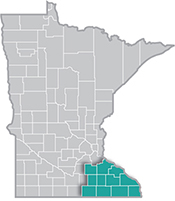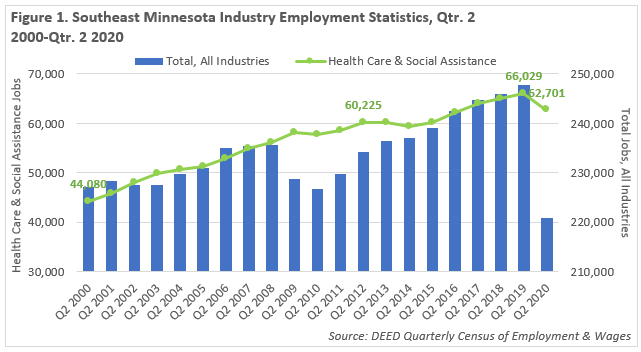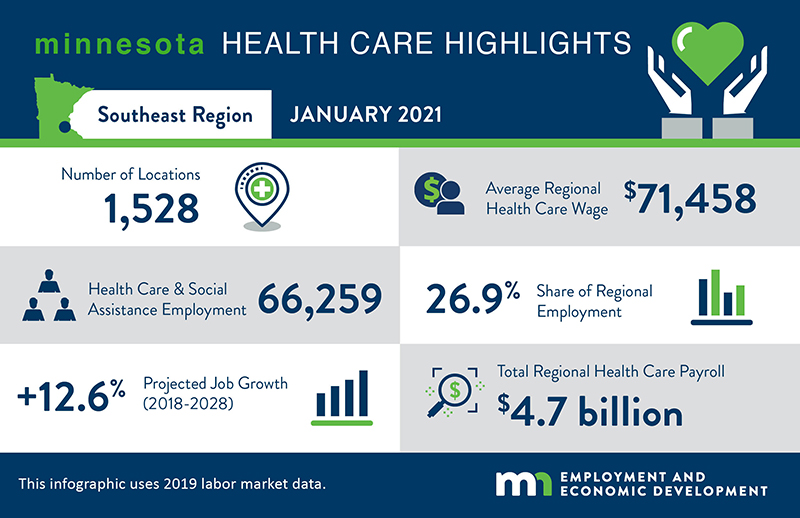 Southeast Minnesota is a health care and agricultural powerhouse. The region is home to the renowned Mayo Clinic and some of the world's most recognized food companies and brands.
Southeast Minnesota is a health care and agricultural powerhouse. The region is home to the renowned Mayo Clinic and some of the world's most recognized food companies and brands.
Advanced manufacturing is especially strong here, with machinery, chemicals, and electronics among the top products.
Want the freshest data delivered by email? Subscribe to our regional newsletters.
1/7/2021 9:00:00 AM
Amid this pandemic, the Health Care industry has perhaps never been more important to Southeast Minnesota’s economy. But the industry has long been a cornerstone of the regional economy. Health Care and Social Assistance has consistently provided more than 60,000 jobs in the region over the past 10 years, accounting for more than one in every four jobs, the highest concentration of health care jobs of any region in the state.
Going back two decades, Health Care and Social Assistance had added nearly 22,000 additional jobs in Southeast Minnesota, making it the largest employing industry in the region. And Health Care continued adding jobs despite two recessions, gaining jobs from 2001 to 2002 and from 2008 to 2010 while other industries were cutting jobs. And the industry gained another 8,000 jobs between 2009 and 2019, as seen on the infographic. However, Health Care suffered severe employment declines from the second quarter of 2019 to the second quarter of 2020, dropping over 3,300 jobs, setting this recession apart from previous recessions (see Figure 1).

While hiring activity dropped quickly during April and May, Health Care Practitioners and Health Care Support Workers were among the occupational groups with the most new job postings in both June and July, with demand picking up in the fall and early winter as a second surge in coronavirus cases spread through the region. Nursing and Residential Care Facilities and Hospitals both exhibited acute demand for workers as they ramped up to meet regional needs, including to bring additional staff on board to cover shifts for workers who had to isolate because of exposure to the virus.
Using data from the most recent Job Vacancy Survey, DEED’s updated Occupations in Demand tool shows that more than one in every four of the occupations in highest demand in the region are health care-related, from Home Health Aides to RNs to Physicians and Surgeons. Jobseekers looking to get into the health care field will find a wide variety of opportunities with a range of typical educational requirements. Several of the jobs hiring now can be started with a high school diploma and some on the-job training, while others require vocational training, an associate’s degree, or a graduate or professional degree (see Table 1).
No other industry is as directly impacted by the pandemic as health care – but health care workers have responded with courage and compassion to serve the citizens of our state and region. DEED and CareerForce are mobilizing resources to help laid off workers move into high demand health care occupations, some of which urgently need workers now and all of which are also projected to have future demand as well. For more information, reach out to your local CareerForce location!

Contact Mark Schultz.